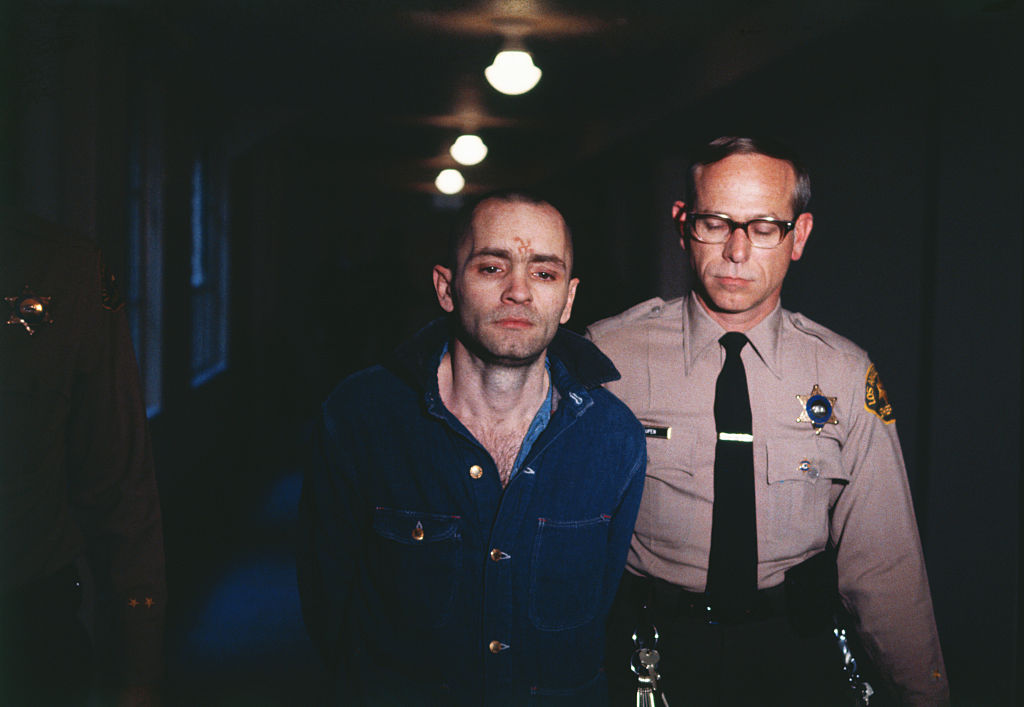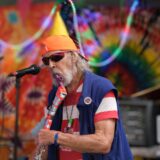Here it comes in all its burning
Cat Power, “Sun”
On a troubled day in 1960’s America, civil rights leader and Nobel laureate Dr Martin Luther King Jr. takes a phone call from a nervous White House. On the line is President Lyndon Johnson, seeking the Baptist visionary’s help and advice on ‘curing’ the racial conflict roiling America.
While the men talk in August 1965, the California Army National Guard warily withdraws from Los Angeles, where 13,400 troops from its armored and infantry divisions have just quashed the Watts Rebellion, which had gotten beyond the control of city police.
The rebellion, AKA the Watts Riots, broke out a week and a bit back when a traffic stop ignited a black ghetto’s longstanding grievances with policing and inequality. Thirty-four people have been killed—most shot dead by security forces—more than a thousand are injured, and hundreds of buildings in South Central LA have gone up in flames over five days of urban mayhem.
Police Chief William Parker, who ran detention facilities for prisoners in World War II and was wounded at Normandy, describes the security operation as “very much like fighting the Viet Cong”. California Governor Edmund ‘Pat’ Brown calls it “guerrilla fighting with gangsters.”
The rebellion has been shut down but authorities report that threats are coming in — threats like: “We’ll go again, baby, when the Guard goes.”
King tells Johnson that his meetings with a “rude” Chief Parker and other LA authorities have not left him optimistic about the powers that be tackling the inequality fueling the chaos. Meanwhile, the talk amongst Watts locals of lighting things up again is “frightening”, says King; the instant that goes down there will be “white retaliation”.
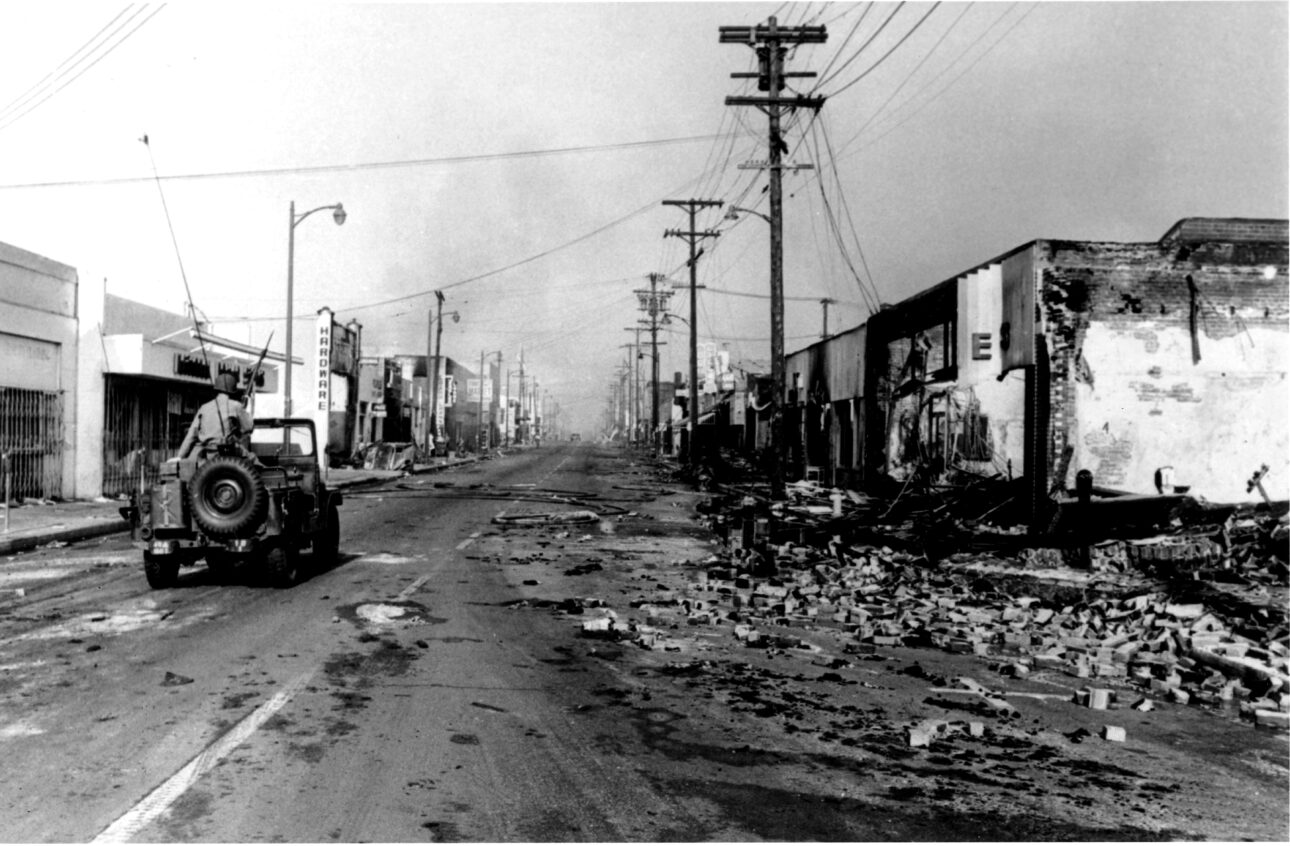
Fleshing out the scene for the President, King—an advocate of nonviolent protest—says that “people have bought up guns.” Without cause for hope in the ghetto, matters will follow an awful logic: “a full-scale race war can develop,” says King.
His tone through the call is subdued compared to the president’s: a product, perhaps, of King knowing that, on the one hand, the Government is asking for his help (not just on bringing peace to America but in supporting its escalating war in Vietnam) yet on the other hand is trying to destroy him.
A year back King’s wife receives an anonymous package containing recordings of her husband with other women along with a letter addressed to him. The letter, which calls King a “filthy, abnormal animal” and an “evil, abnormal beast”, says that the preacher’s extramarital sex life will be publicly exposed unless he does “the one thing left for you to do” – a suggestion widely interpreted as meaning: kill yourself.
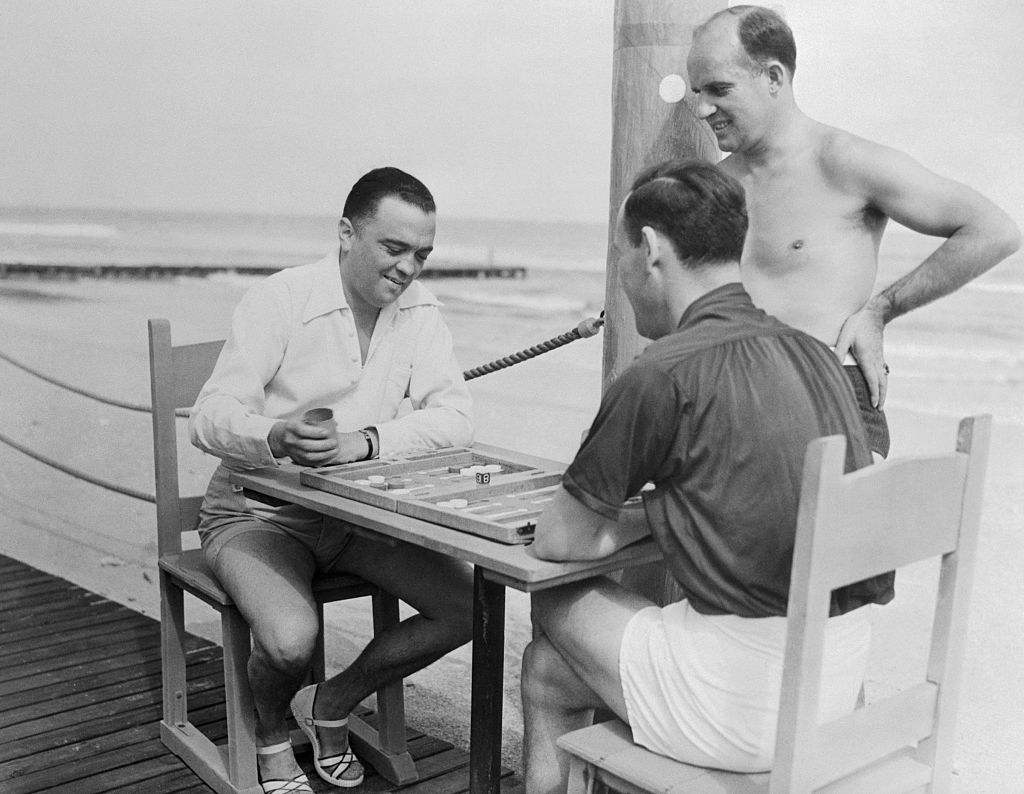
The Federal Bureau of Investigation sent the letter and recordings as part of a campaign of surveillance and harassment it conducted for years upon years against King and his associates. The FBI director, John Edgar Hoover, paints King – who campaigns for higher wages and improved working conditions – as a communist stooge. Hoover publicly denounces King while ramping up intelligence operations against the civil rights leader whom the Bureau also categorizes as the head of a “black nationalist hate group”.
On April 3, 1968, King gives his “I’ve Been to the Mountaintop” speech in Memphis Tennessee, while there to support black garbage workers who had gone on strike—declared illegal—over pay and conditions in the aftermath of two men being crushed to death in compactors, just two years after another two workers had died the same way. In King’s fatalistic conclusion to the speech, he mentions the threats he’d been receiving and his comrades’ concern about what “our sick white brothers” might do.
“I don’t know what will happen now,” he says, even if one man who does is the militantly-racist, amphetamine-dependent, small-time criminal, James Earl Ray, a “sick white brother” who has taken a room within sight of King’s motel balcony.
By this stage, however, King’s Gandhian commitment to non-violence has left him outdated to a new generation of urban blacks that believe the fight for civil rights needs steel.
Two years before Memphis and a year after Watts, the Black Panther Party is founded in the Bay Area city of Oakland. Members form armed units to shadow police through poor black neighborhoods. Black Panther chants include: “The revolution has come! It’s time to pick up the gun! Off the pigs!” This is where the electricity is now. In “Radical Chic”, Tom Wolfe writes for New York magazine about rich white Manhattanites switching their black household staff for “white South Americans” so as not to offend the Black Panthers that have displaced “civil rights Negroes” as the best party-props for establishing progressive credibility.
Gunfights break out between police and Panthers in the late ‘60s. Hoover declares the black militant organization to be “the greatest threat to the internal security of the country” (a status later squeezed by the FBI’s hatred of the American Indian Movement, an indigenous activist organization whose 1973 occupation of Wounded Knee, South Dakota, disturbed uranium mining interests and sparked not just an FBI-backed paramilitary confrontation but, over the next three years, many tribal activists allege, the suspicious deaths of dozens of AIM supporters).
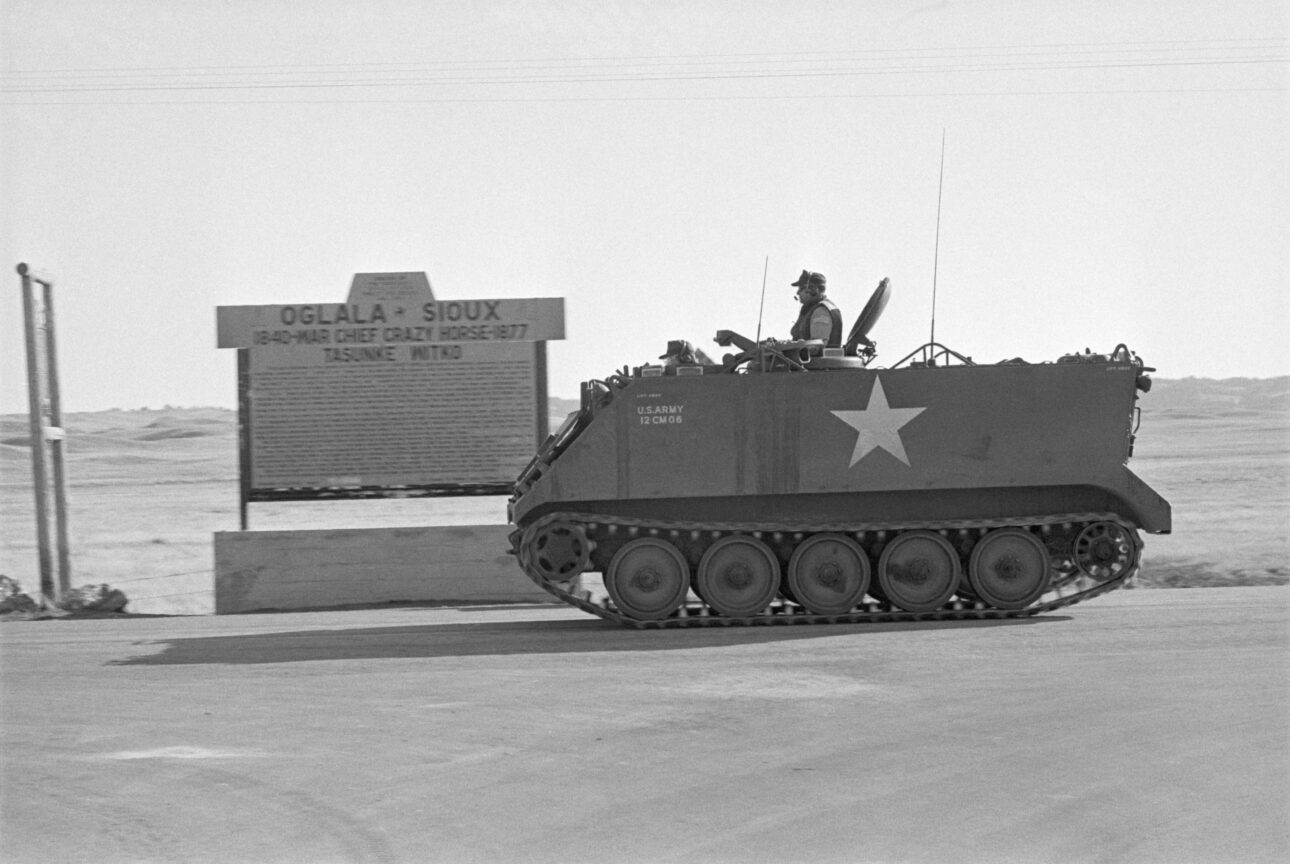
But back in 1967 the mayhem rolls on with more than 150 race riots erupting nationwide; more than 75 people are killed, upwards of 2000 injured and block upon city block is devastated.
In The Second Civil War: Arming for Armageddon, Esquire-writer Garry Wills tours these urban conflict zones to find military staging points, a frenzied ramping up of police armouries, civilian and paramilitary stockpiling of weapons, the spread of black separatism and revolutionary sentiment matched by a white determination to stomp it out, and a growing, mutual expectation of civil war.
In Detroit, prominent African-American religious leader, the Reverend Albert Cleage of Central United Church of Christ, tells Wills that, “every black man in America feels that the white man is just at the beginning of using genocide here.” Asked, when a riot had broken out, if he was telling his congregation to cool it, Cleage says he has no intention: “We are trying to get free, and we want justice, and we are no longer talking about love and all these other things that cluttered up people’s minds for so long. We want justice and we are going to fight for it.”
The Reverend encourages blacks to arm themselves, for even if the weapons they amass can never match the whites’ vast arsenals, “their arms are not going to be any more effective here than in Vietnam. You don’t need superior arms. The Negro is not going to be stupid enough to throw bricks at tanks.”
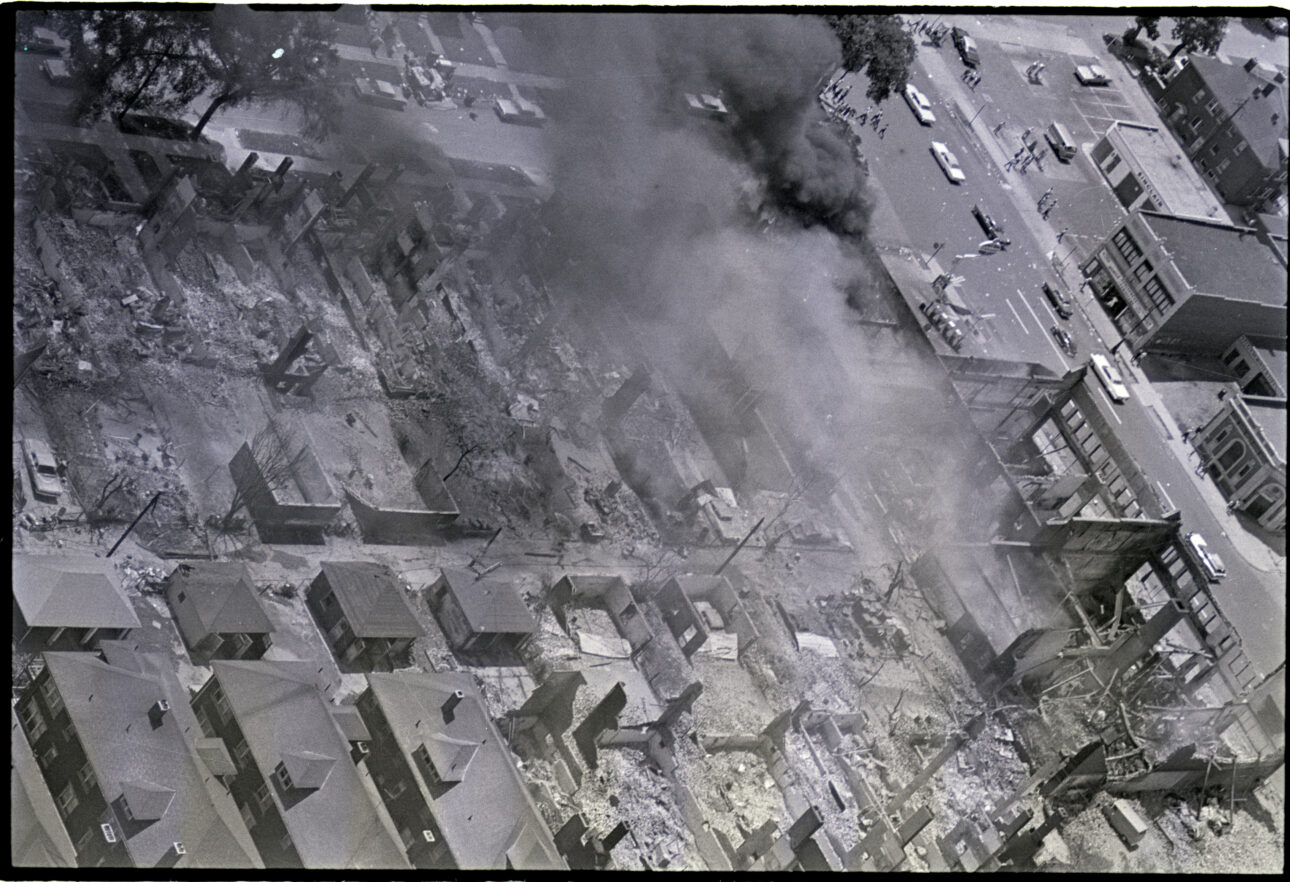
Over east in Philadelphia, Wills spends time with the police as they prepare. He finds the department “working on anti-sniper tactics, learning to shoot from helicopters; finding out which men can shoot from heights, from ladders; testing heavier guns and body armor.” The police chief has 125 sharpshooters cruising the city in a fleet of dedicated cars, each loaded with the following:
2 x M-70 Winchester rifles 30/06 cal, with Bal-Var scope, sling, case, 200 rounds ammo
2 x M-12 Winchester shotguns 12 gauge with case, 100 rounds .00 buck, 25 rounds rifled slugs
1 x Thompson submachine gun .45 cal. 500 rounds ammo
1 x M-1 carbine .30 cal. 200 rounds ammo
1 x tear gas gun (Federal), with:
- 4 x Fliterite #230
- 6 x Speedheat #206
- 6 x Short RN’G #203
- 4 x Grenades #112
- 2 x Smoke #108
2 Scott Air-Pak masks
3 x MSA gas masks (or 5 MSA gas masks with cases)
2 x riot shields
2 x riot helmets
1 x field glasses
2 x riot batons
1 x clip board
2 x riot goggles
2 x bulletproof vests
1 x fire extinguisher
1 x half-mile light
1 x equipment list
5 x 30-shot Thompson magazines
5 x 20-shot Thompson magazines
2 x 15-shot carbine magazines
2 x 30-shot carbine magazines
Gearing up comes in handy for police departments come Memphis, come April 4, 1968, when that speed-loving “sick white brother” kills Martin Luther King Jr with a rifle shot. Riots erupt in 110 cities. Dozens die and thousands are injured. The inner city of Washington DC burns. Marines are deployed around the Capitol while infantrymen guard the White House.
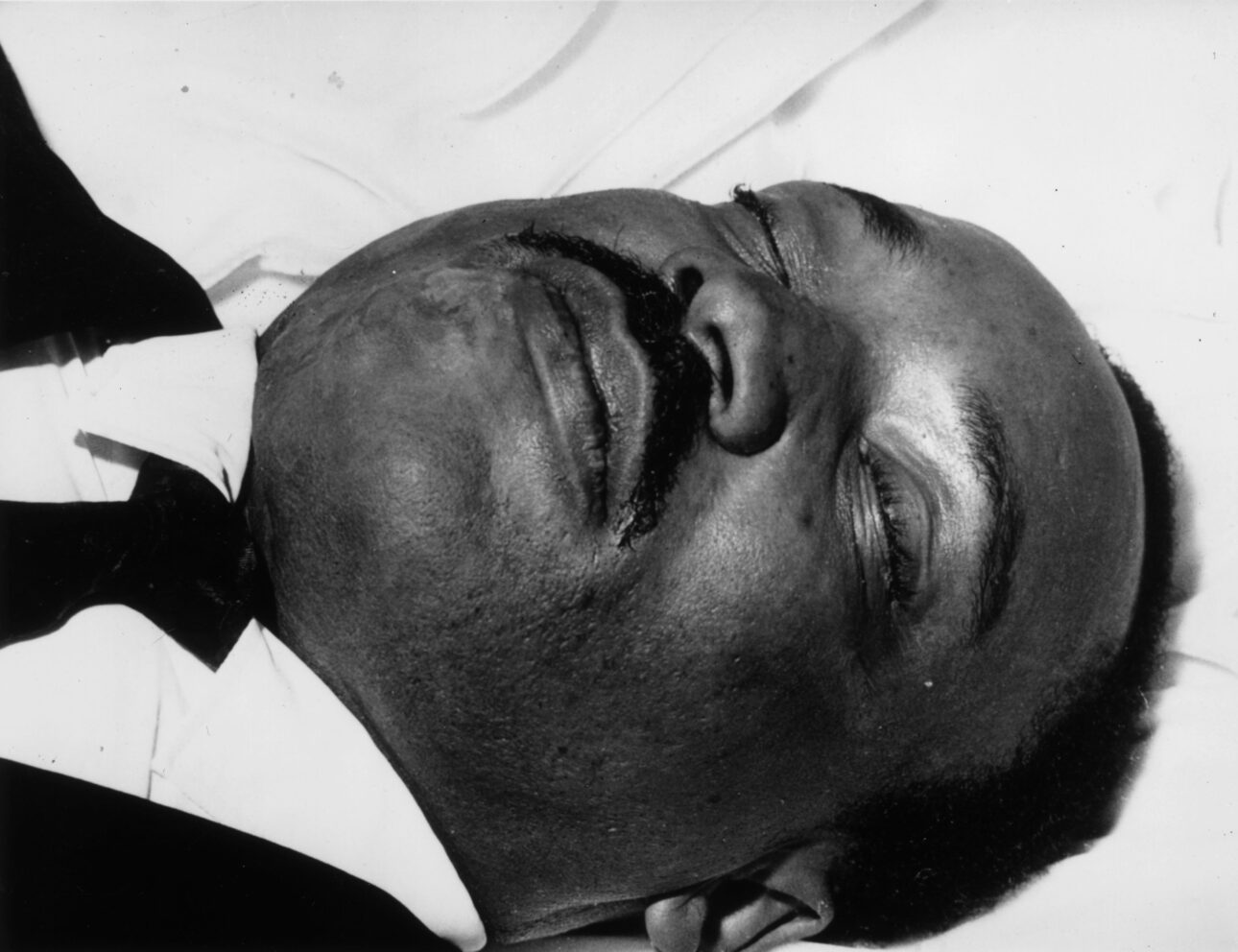
Meanwhile, the US’s war in Vietnam is in full flight, with American armed forces at their peak of manpower and firepower. They, too, are quaffing serious quantities of speed. A House Select Committee finds that between 1966 and 1969 the American military dispenses 225 million tablets of dextroamphetamine (brand-name Dexedrine), often supplementing these teeth-grinding boosters with antipsychotics and steroids. Esquire‘s Michael Herr gives them a shout-out in his coverage: “Going out at night the medics gave you pills, Dexedrine breath like dead snakes kept too long in a jar.”
A Marine I know, Larry, is assigned to a Corps clearing house in Oakland during Vietnam. Larry’s job is to go through the gear and personal effects of dead Marines before they are passed on to their families. His orders are to incinerate anything compromising. That usually means drugs but what Larry also regularly finds, and what he says the military make highest priority for destruction, are trophy shots: happy snaps of Vietnamese ears and heads that Americans had severed.
Straight into the fire.
Larry says this production-line bowdlerisation of history screws him up. “The day it just got too much was the day I found a photo of a Marine sticking his penis in the mouth of a severed head,” he says. This evidence matters and he itches to smuggle it out, but they watch “like hawks”.
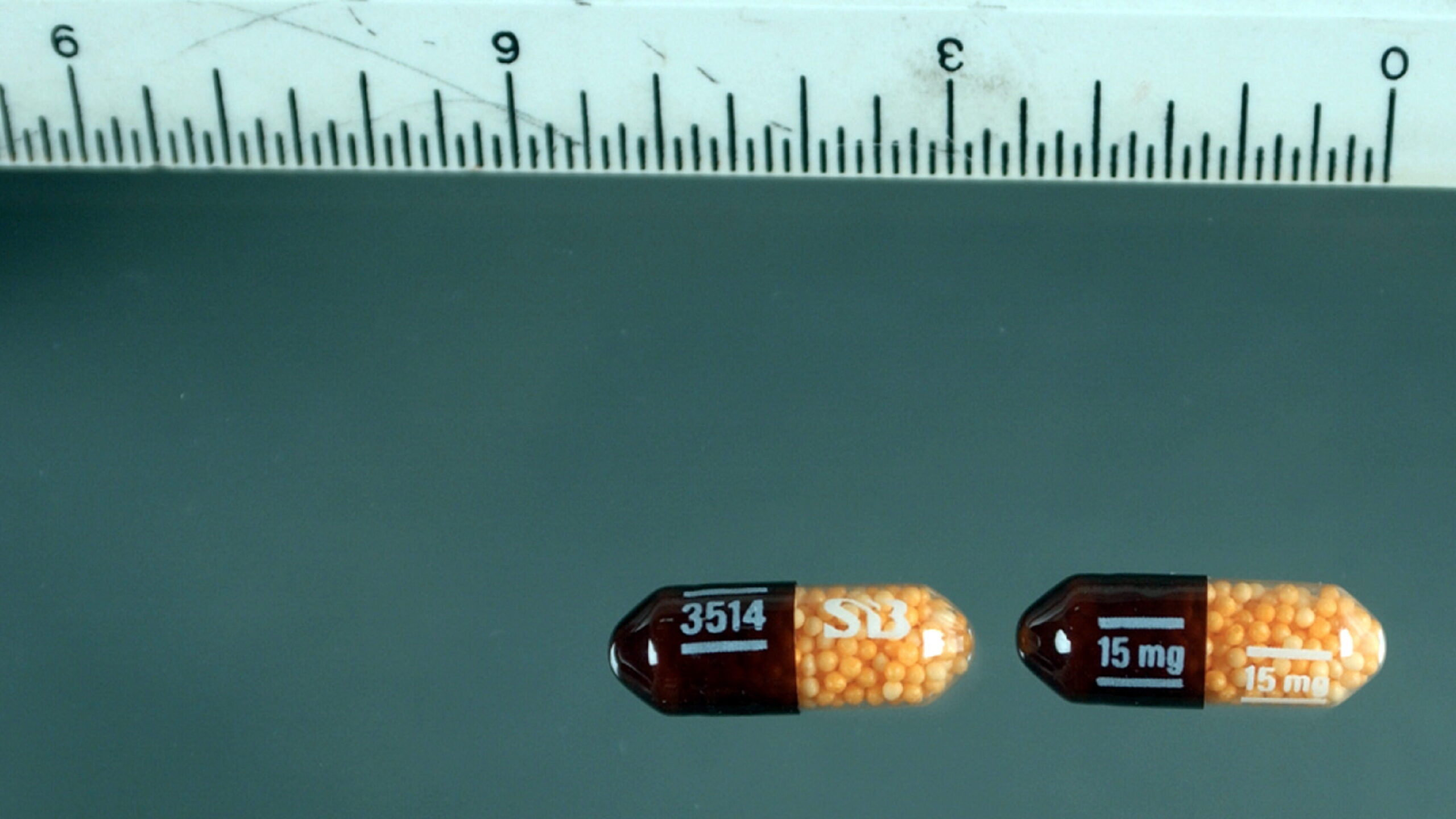
Larry is later discharged in a disturbed state and gets into amphetamines big-time: most particularly into speed cooked to the Nazi recipe which he says cranks him to work unbelievably hard and fast. “But little by little,” he says, “without you noticing, you start to go insane. Your decisions seem normal to you but to anyone else – anyone not on Methedrine – your decisions are crazy.” His boss at a steel mill loves his zeal and pace until Larry’s mania outruns safety protocols and he accidentally cuts off one of his own arms. Yet still he doesn’t quit the chemical.
Over where the happy snaps come from, the mayhem certainly rolls on; in 1968, upwards of 200,000 Vietnamese are killed, including up to 500 people in one massacre alone that takes place on March 16 in and around a cluster of hamlets, the most well-known of which is My Lai. After first herding unarmed villagers together, American soldiers go berserk, murdering babies, kids, old people, and everyone in between. The extermination continues for hours until a US helicopter pilot sees what is going on and intervenes, radioing in reports and preparing his crew to fire on their brother soldiers if they don’t stop.
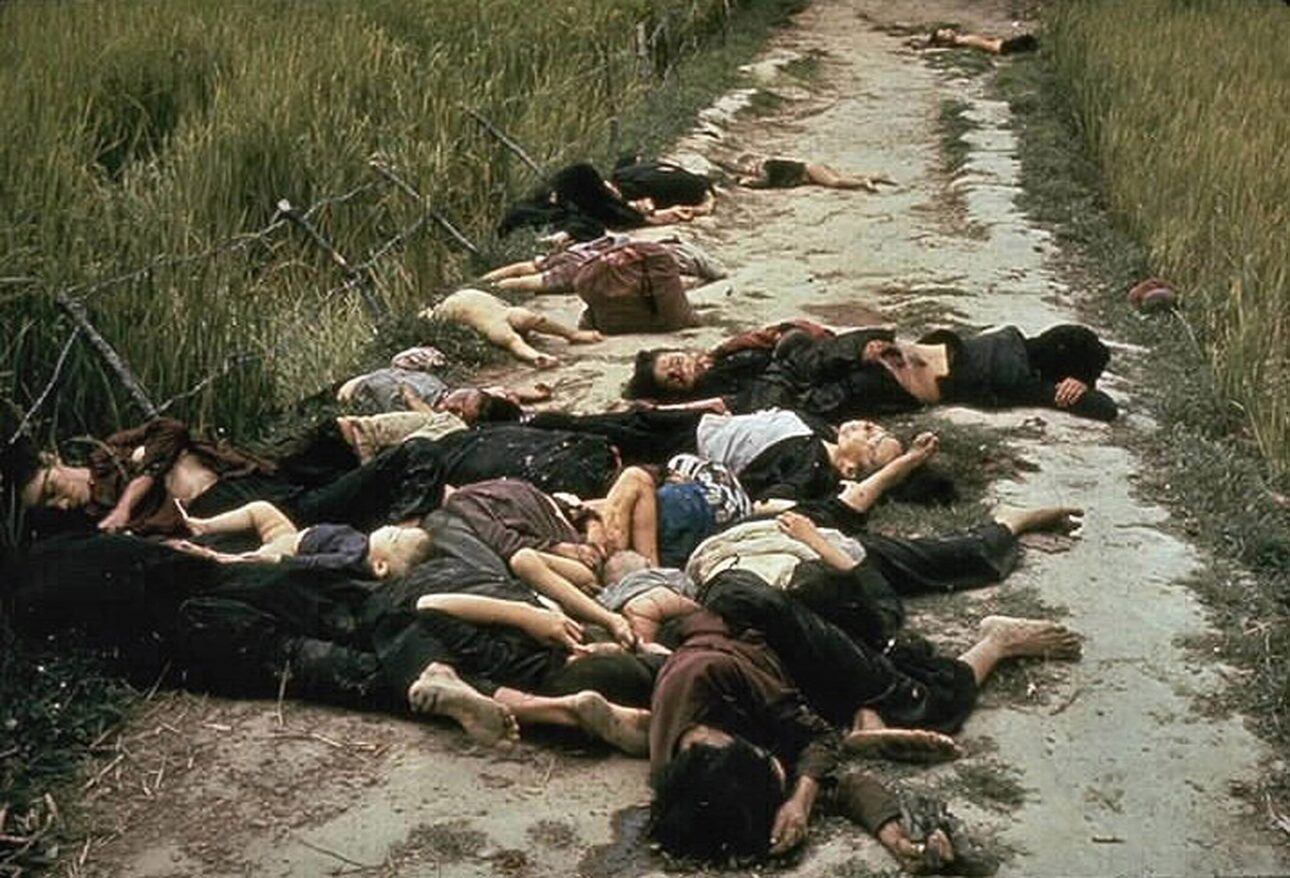
Nevertheless, the US military declares the operation a success, even congratulating the participants, and the Pentagon’s rosy tale holds until November 1969 when journalist Seymour Hersh exposes the massacre for which one soldier—William Laws Calley Jr.—will eventually serve three and half years of home detention.
The following month, the culprits of a small cluster of domestic massacres start to be revealed – killings for which almost all participants will be convicted and few ever released.
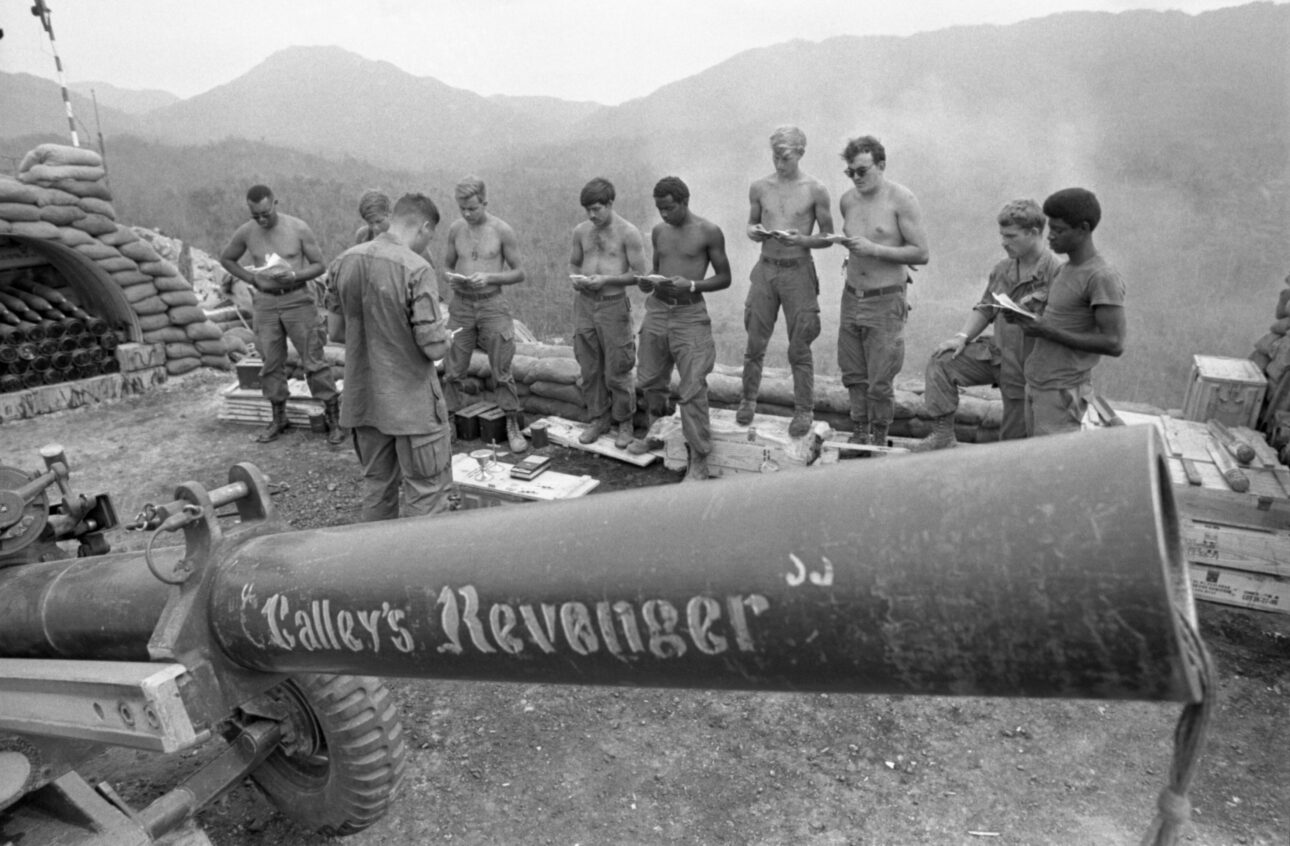
But before getting to that, let’s wind back the clock to August, when Roman Polanski kneels at the graffitied front door of his home.
It is a beautiful Sunday afternoon here in LA’s slice of the Santa Monica Mountains.
It’s a week until Polanski’s thirty-sixth birthday. It’s also a week or so until he becomes a dad. Well, no.
No.
To make all this slow, Polanski’s taken benzodiazepine (brand-name Valium). Lately, he’s been trying all the time to slow time, to suspend it, to end it, to slide it into reverse.
Because last year was fast and good; Polanski hit the big-time as a movie director with his Satanism-and-pregnancy thriller, Rosemary’s Baby. It banked ten times its budget. One of its actors scored an Oscar. Doors opened everywhere.
He looks again at his own door. On it one word is written: PIG.
This painted house on Cielo Drive, Benedict Canyon, rented by Polanski and his wife, Sharon Tate, dates back to World War II. It was built in the style of a French country home for French actress Michele Morgan after she fled the Nazi conquistadors. Safe in LA, Morgan signed with RKO Pictures to act alongside big American stars including Humphrey Bogart and Frank Sinatra (whose wife, Mia Farrow, made her mark in Rosemary’s Baby). When the war was done, Morgan bid adieu to Hollywood and returned to France, winning Cannes’ first Best Actress award in 1946.
Polanski, however, spent the war in Poland. Under the Swastika. As a Jew.
He is six when Nazi hordes, wired tight on pharmaceutical methamphetamine-hydrochloride (brand-name Pervitin), launch a blitzkrieg, lightning war, even before storming France. The Fascists strike from the west. Seventeen days into the war the Soviet Union activates a secret protocol of its non-aggression pact with Nazi Germany and invades Poland from the east. In just over a month, with hundreds of thousands of Poles dead, the country falls, its people and territory divided between two totalitarian behemoths.
Polanski and his family are in Krakow, a city from the Dark Ages named after a man murdered by his brother. Krakow quickly becomes an administrative center for Nazi colonization. The Ubermenschen (men whose will and self realization vault them above the rest of humanity) get to work with their race-war. Building a new, improved land of opportunity requires exterminating vermin.
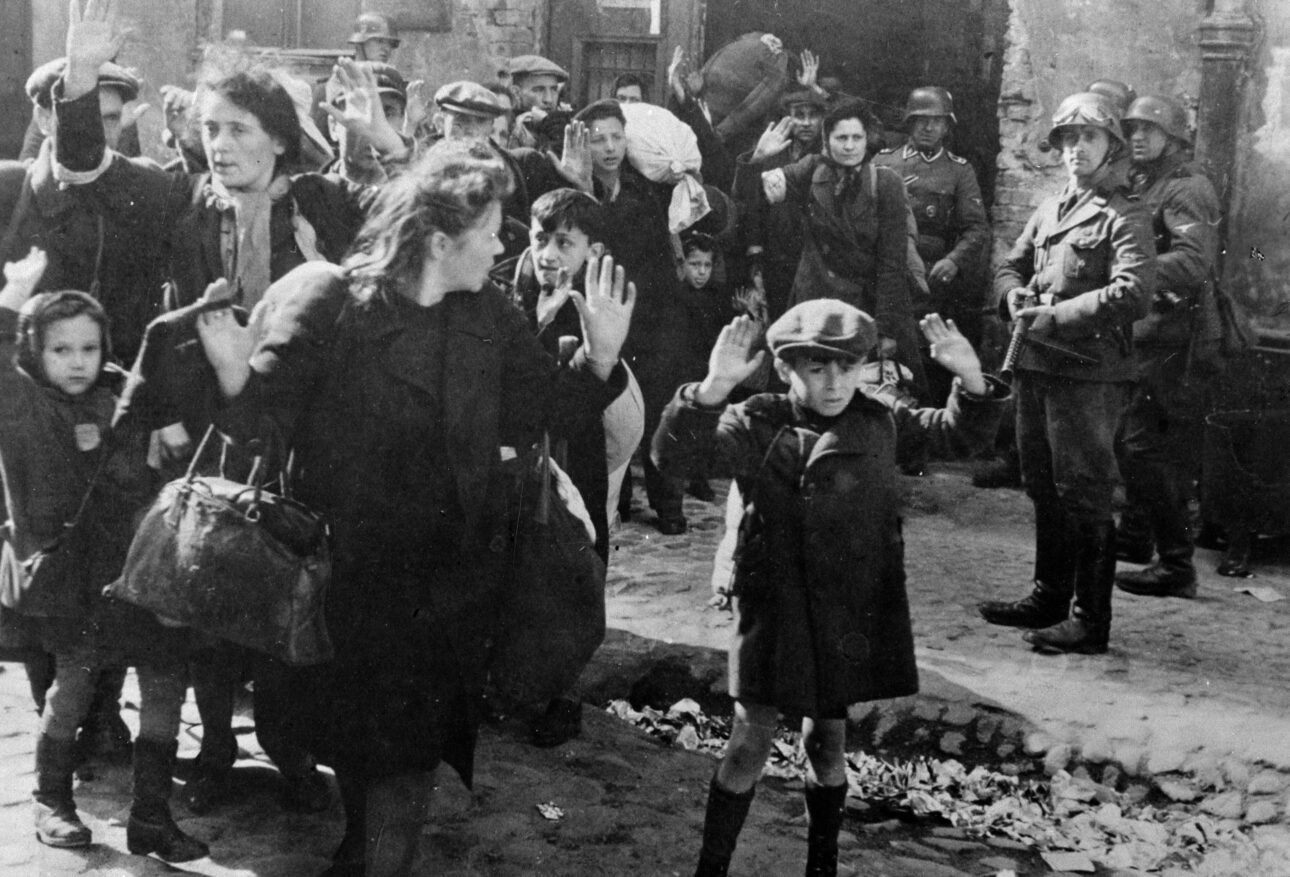
Polanski is thus expelled from school and walled into a ghetto. He watches round-ups of subhumans like him: untermenschen. Polanski hears women dragged screaming from his apartment block. Roman sees murder; the first he watches is of an old woman crying out in Yiddish, a language the little boy doesn’t understand. He later tells the Hollywood Reporter: “At one moment she was on all fours, and suddenly there was a gun in the hand of that young SS man, and he shot her in the back, and the blood came out, like the little fountain that we have in the offices, you know, a bulb of blood.”
Polanski finds his mother gone. Taken. She was pregnant. His father cries.
Polanski sees his father rounded-up and marched away. Desperate, he approaches the lines but his dad hisses at him to piss off.
Parentless, Polanski slips the ghetto and pretends as best he can to be Catholic, sheltered by a dirt-poor family farming a one-acre plot.
After the war his father returns from a concentration camp in Austria. They learn that Polanski’s mother was sent to Auschwitz and gassed on arrival, no doubt with hydrogen cyanide (brand-name, Zyklon B).
A resilient little chap (he tops out at a mere five-foot-five), Polanski becomes a promising film director in Poland (with Knife in the Water, 1962), then England (Repulsion, 1965), and ultimately, after shooting Rosemary’s Baby (1968) on location in Manhattan, conquers entertainment’s Everest: the United States of America. Polanski now marries and impregnates a hot Texan blonde, Sharon Tate, and, while continuing to work abroad, plants Sharon in the exclusive preserve of 10050 Cielo Drive, Benedict Canyon.
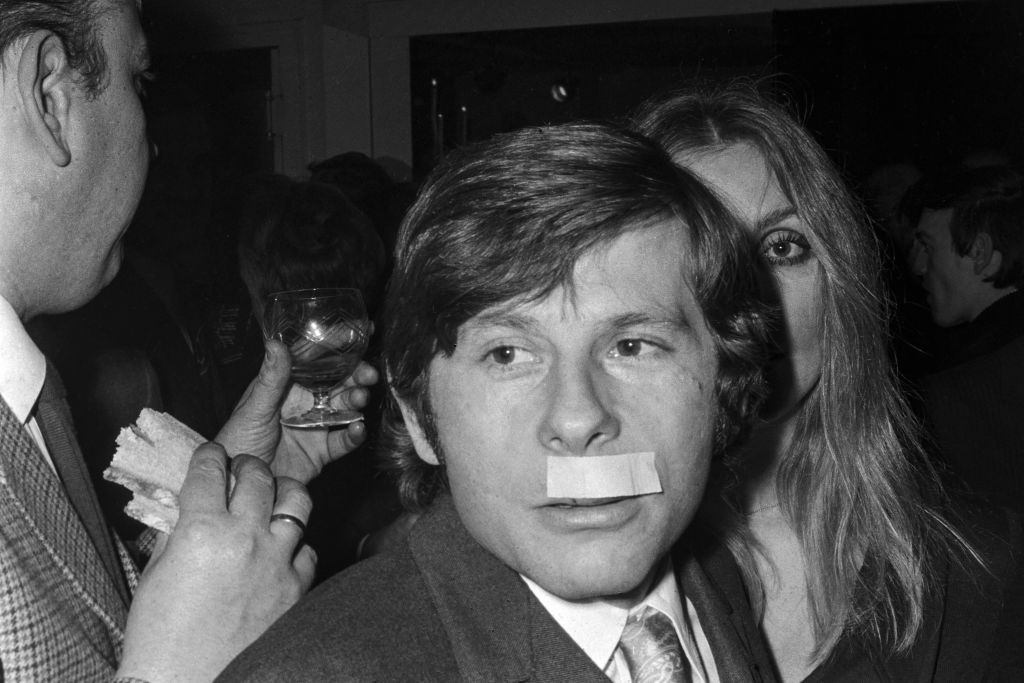
Down below in society’s racially-charged lowlands, however, America convulses with fear and rage. It’s small beer compared to what Polanski lived through as a kid, of course, or what South East Asia is suffering, but America’s era of assassinations, racist terrorism and violence, ideological polarization, brutally prejudiced policing, campus Bolshevism, metastasizing domestic surveillance, a spreading use of drugs – most notably lysergic acid diethylamide (LSD), the proliferation of which owes much to the Central Intelligence Agency’s deranged and often illegal mind-control program, MK-ULTRA – and compulsory military service in a land war in Asia that Washington picked up from the French, feels plenty serious to plenty of Americans.
It certainly feels serious to my (white) parents, living at this time in Oregon where my grandfather is friend and doctor to the family of Merry Prankster George Walker, who bulk buys LSD for to supply the Acid Tests of novelist and cultural provocateur Ken Kesey, whose experiences as a test subject in MK-ULTRA experiments at the Veterans Administration Hospital in Menlo Park, California, give him the visions he explores in One Flew Over The Cuckoo’s Nest (1962): revelations of what the novel calls the ‘Combine’: the vast, aggressive, duplicitous, covert, and life-sapping orchestration of our perceptions, experiences and responses. Menlo Park, the birthplace of Kesey’s vision, will, in the 21st Century, hosts the global headquarters of Facebook.
My dad, who relentlessly denounces Kesey as a ‘bad man’, a drug pusher, says that the best response to the 1960s’ racial strife would have been for the US government to apologize to black Americans for slavery and then send them ‘back’ to Africa. ‘It just hasn’t worked out.’ Australia appeals to him, he says, because “it’s like how America used to be: safe and friendly.”
On and on the turmoil grinds through this crazed decade. Riots and arson hit scores of inner cities, their streets paced by gunmen—government and otherwise—and choking with mists of phenacyl chloride (brand-name MACE) and 2-chlorobenzalmalononitrile (known as CS gas and also pumped into Viet Cong tunnels and underground complexes).
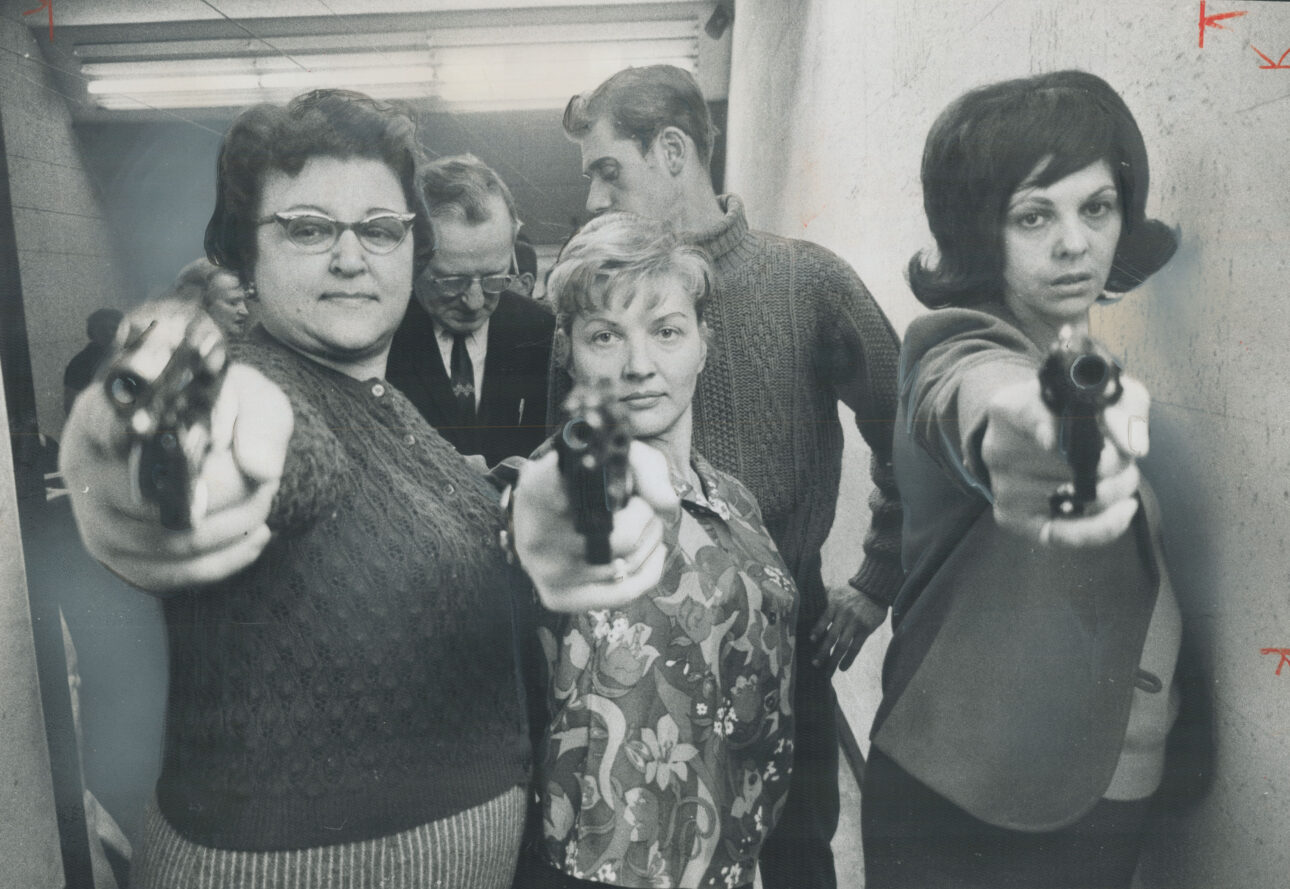
Psychedelia’s novelist laureate Thomas Pynchon drops in on the blast zone of Watts, down the Santa Monica Mountains from what will become Polanksi’s door. Pynchon ruminates in the New York Times that,“While the white culture is concerned with various forms of systematized folly—the economy of the area in fact depending on it—the black culture is stuck pretty much with basic realities like disease, like failure, violence and death, which the whites have mostly chosen–and can afford–to ignore. The two cultures do not understand each other, though white values are displayed without let-up on black people’s TV screens.”
A white American well-acquainted with ‘basic realities’ at the time of the Watts Rebellion is another sick white brother: a largely illiterate prisoner named Charles Milles Manson. Born in 1934 (a year after Polanski enters the human race) and now locked away at Washington State’s McNeil Island Corrections Centre for inept attempts at third-rate crimes, Manson is to date the predictable product of a totally absent father, poverty, a criminal floozy of a mother who offloaded him so she could concentrate on men, and years spent in boys homes and juvenile jails that could have served as sets for X-rated productions of Lord of the Flies.
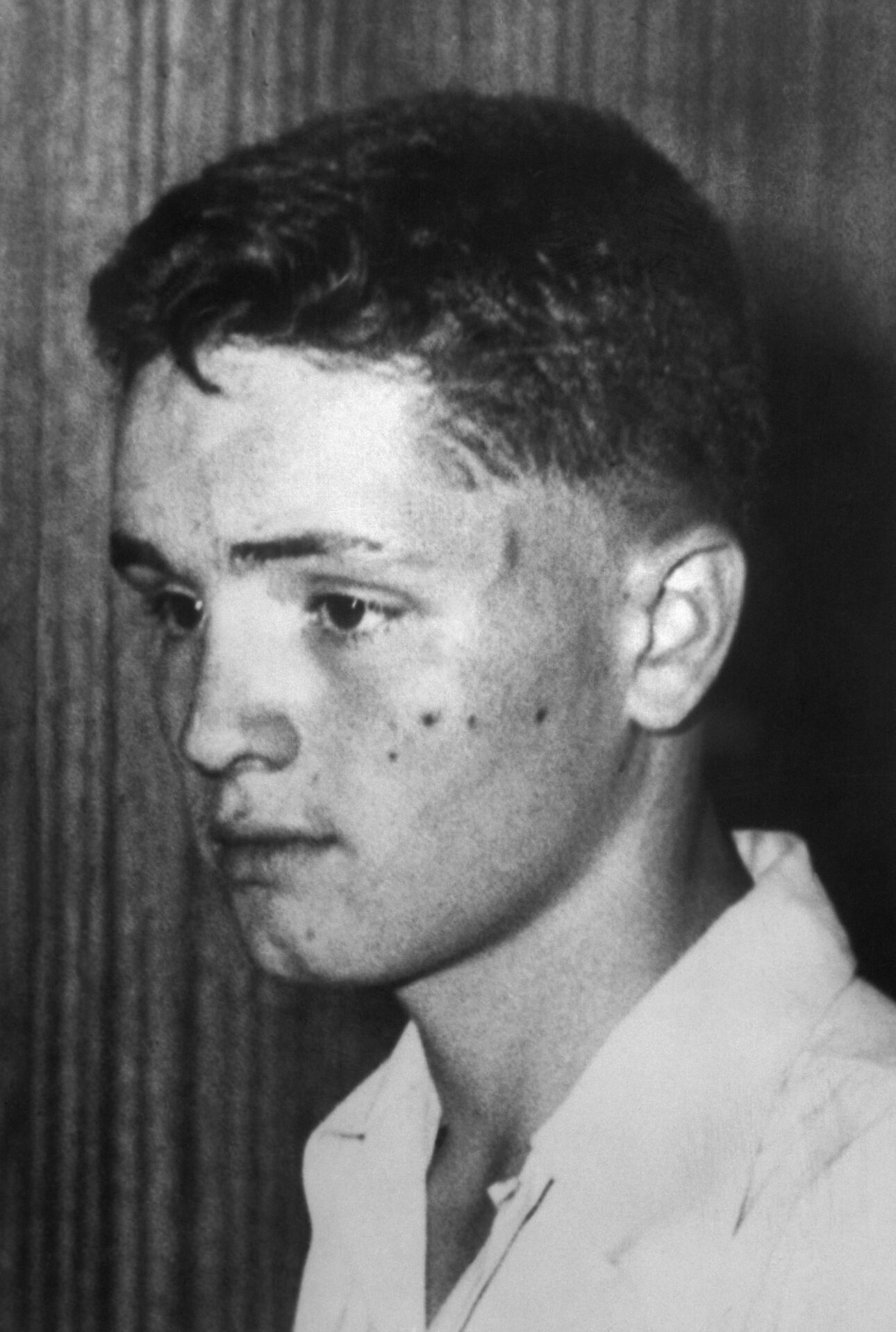
A little chap who summits at only 163 centimetres (AKA five foot four), Manson is no stranger to getting raped and beaten, thanks to spending much of his formative years in the ‘correctional’ system. He gets his own back at times, though, and, as a 17-year-old in Virginia’s Natural Bridge Honor Camp, is caught sodomizing another boy while holding a razor to the lad’s throat. That infraction costs him early release and triggers a transfer to adult prison.
Polanski also gets in trouble for non-consensual sodomy, although when he is 43 and his victim, a girl, is 13. Instead of using a razor to gain control, Polanski deploys a cocktail of champagne and the hypnotic sedative methaqualone (brand-name Quaalude). And rather than attack his victim in the shower block of a juvenile jail, Polanski does the deed in comfort at Jack Nicholson’s house in the Hollywood Hills.
But that’s a crime of the future. We’re still in the 1960s, the end of which finds Polanski on his knees before the door and Manson on the cover of Life magazine.
First, though, before Manson ‘kills the Sixties’, as is proclaimed ad nauseum (most famously by Joan ‘Bret-Easton-Ellis-without-the-humor’ Didion in The White Album, we have crucial terrain to cover.
Manson starts the ‘60s as a grubby little inmate whose rap sheet—prison buggery aside—is a bunch of crap. It includes parole violations, car theft, breaking into petrol stations, trying to cash a forged cheque for US$37.50, low-grade pimping, and doing the bolt from a boys’ home. The seedy little crud is so not lead candidate to become trickster Antichrist of the desert, doted on by scores of boot-licking groupies, who bedazzles Dennis Wilson of the Beach Boys so much that the rockstar lets him move into his house, and who commands a psychedelic death squad.
In pursuit of self ‘improvement’ as a guest of the state, Manson soaks up a course on Dale Carnegie’s How to Win Friends and Influence People at L.A.’s Terminal Island prison before his 1961 transfer to McNeil Island prison in Puget Sound, Washington State.
During Manson’s last incarceration before his fateful release in 1967—the year that Ray also left prison (but via escaping) in the lead-up to slaying King—Manson becomes an enthusiastic student of Scientology.
At McNeil Island, the future cult leader identifies himself to prison authorities as a Scientologist and joins a prison Scientology group, seeking to master the self-styled ‘science of mental health’-cum-religion founded in the 1950s by science-fiction writer, Lafayette Ronald Hubbard.
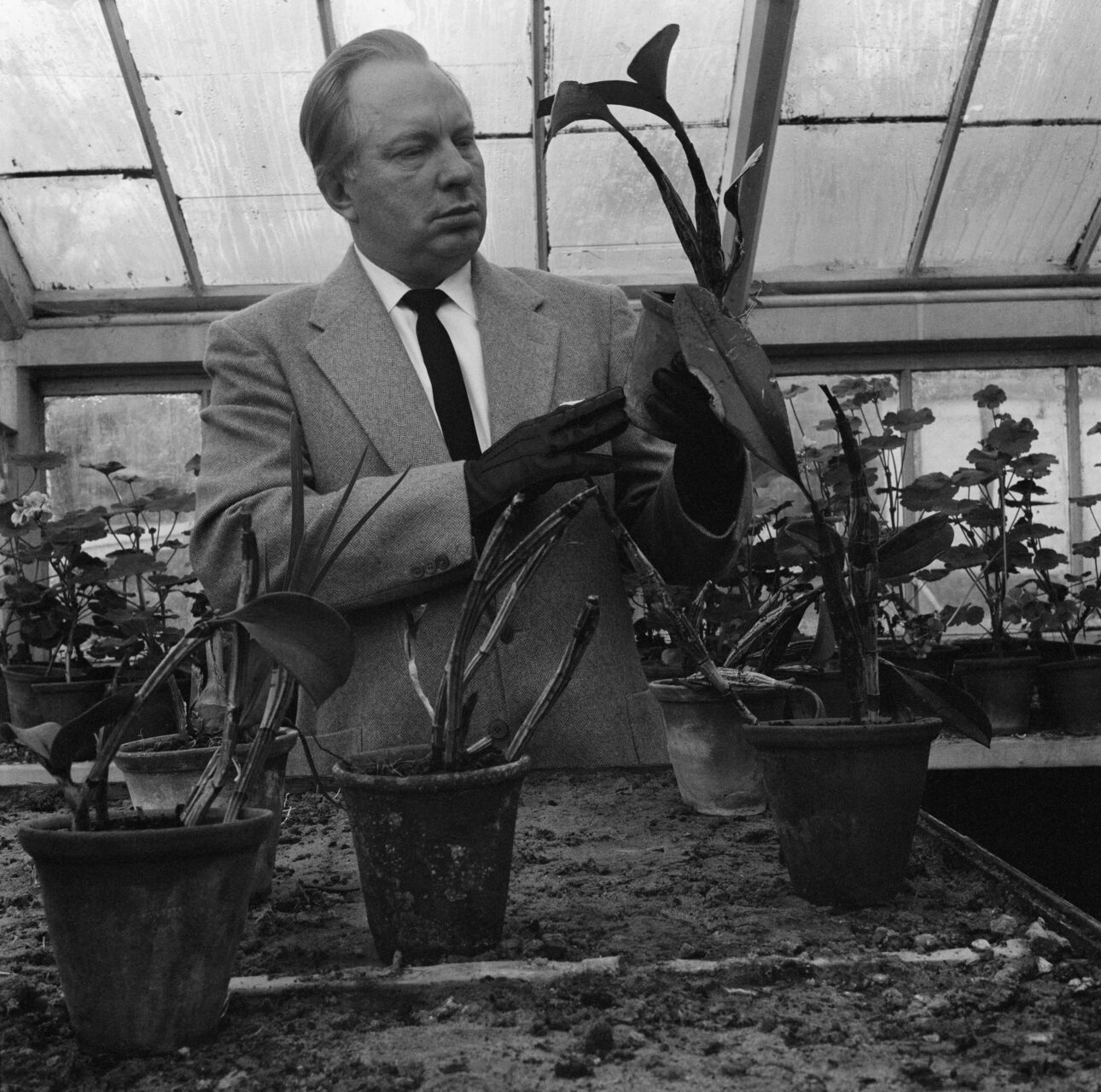
Scientology holds that humans have both an analytic mind, which reasons with clarity, and a ‘reactive mind’, which is an unwanted mental storehouse of emotionally-charged ‘recordings’ of distressing and traumatic experiences. Scientology argues that these recordings, dubbed ‘engrams’, and the reactive mind which forms and stores them, keep us weak—muddle-minded and ruled by inhibition and fear—and they cripple our potential to realize life’s goal of ’infinite survival’.
Someone at the mercy of ‘engrams’ and the ‘reactive mind’ is a ‘preclear’, according to Scientology. Such people require ‘auditing’ in order to become ‘Clear’, which is the transcendent status of ‘a person who no longer has his own reactive mind’.
Manson’s Scientology group leader and teacher at the island clink is bank robber Lanier Ramer, who later tells the Daily Olympian that by the end of the 18 months he spent instructing Manson in Scientology, the future cult leader “was really starting to make some headway … he was probably as close to sane then as he had ever been.”
Manson seems inclined to agree, quoted in Manson In His Own Words that he got “pretty heavy into Dianetics and Scientology” in prison. Manson credits Scientology as helping him come “out of my state of depression”. He explains: “I was understanding myself better, had a positive outlook on life, and knew how to direct my energies to each day and each task. I had more confidence in myself and went the way I chose to go, whereas previously, I had always been content to listen and follow.”
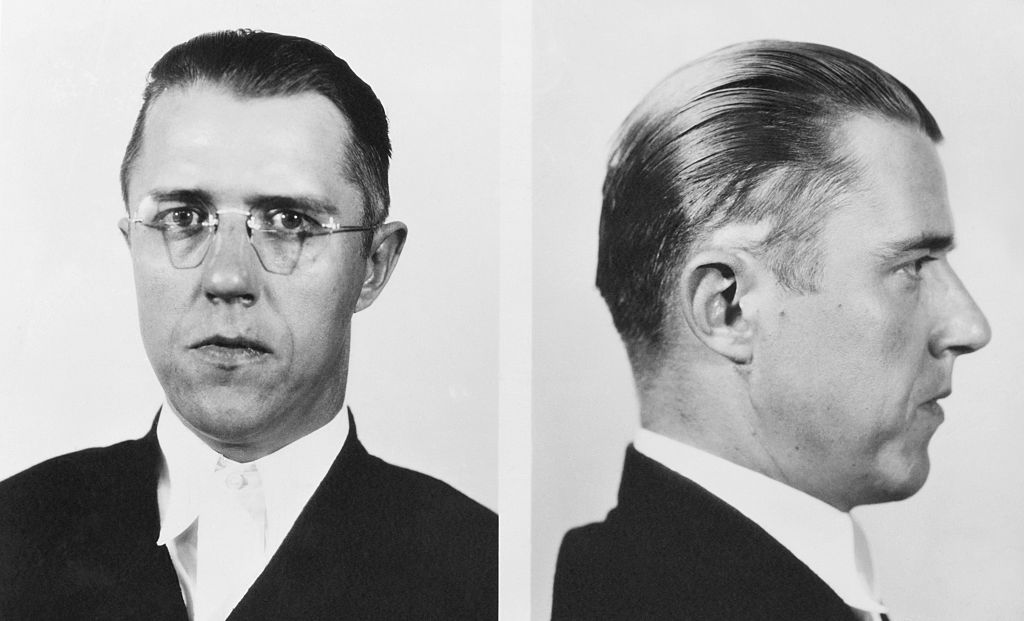
At McNeil Island, Manson also serves time with Alvin Karpis, a Depression-era bandit leader who in 1943 had been declared Public Enemy Number One by the FBI at the height of his bank heists and kidnappings with the (Ma) Baker clan.
In Karpis’s autobiography he writes that ‘Little Charlie’ Manson (whom the gangster taught guitar), “and some other kids in McNeil belong to the Church of Scientology, a religious cult which Charlie attempts to persuade me to join. ‘If you believe strong enough that you can do something, you can do it!’ he explains, but I decline to join.”
Another inmate at the time is prisoner (later turned rehab worker and activist) Jerry Rooney, who told the San Francisco Examiner in 1969 that “the only thing that made him [Manson] stand out … was his interest in the guitar and Scientology.” Talking about what inmates turned to at McNeil, Rooney said that while he pursued Catholicism inside, “the Black Muslims had their thing, others had something else, and I guess Charlie had Scientology.”
Later, on the slide towards 1969’s bloody Californian rampages, Manson reportedly spends Family funds sending cult heavy Bruce Davis to England where he works at a Scientology headquarters. When the bloody death there of a man in the Manson orbit prompts a US district attorney to request information, Scotland Yard reports the UK address Davis that supplied as follows: “Dormer Cottage, Felbridge, Surrey. This address is owned by the Scientology Movement and houses followers of this organization.”
A Church of Scientology representative has contacted SPIN, writing that Manson “never had any affiliation with the Church and was never a member,” and requesting that any reference to Scientology be removed from this article.
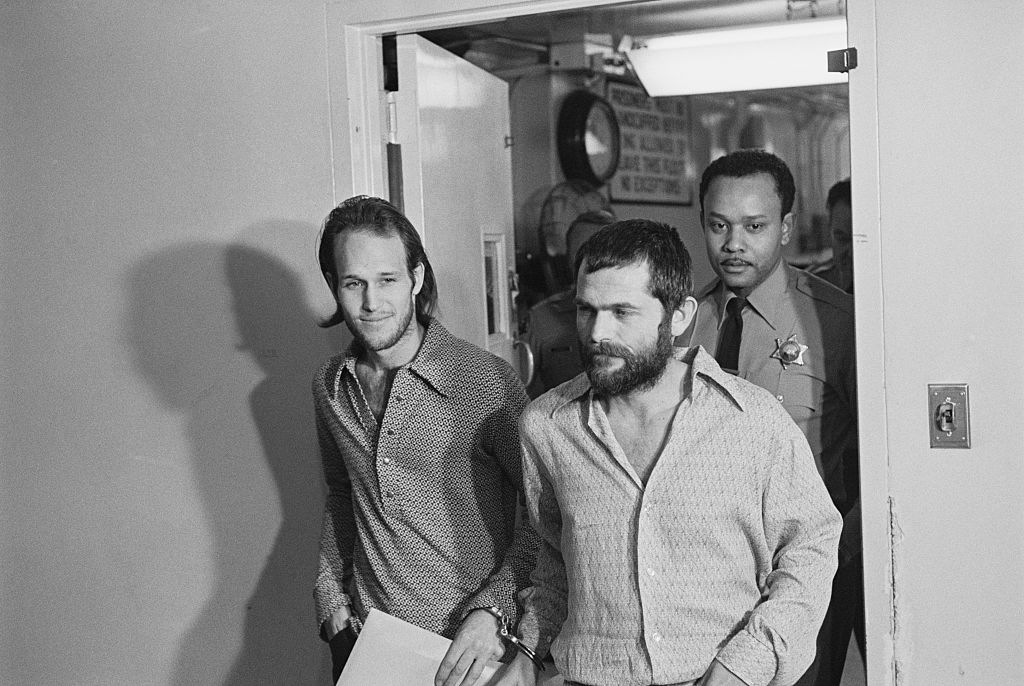
McNeil Island authorities eventually break up the Scientology group, but also overrunning inmates through this era are race-based prison gangs bristling with the same division and rage convulsing the outside world. In fact, with the Black Power movement and white reaction now at full steam there is often little separation between worlds: the Aryan Brotherhood, Black Panther Party, and Black Guerrilla Family are all ambitious Californian outfits with members in and out, recruitment in and out, taking on their enemies inside and out.
And here’s little white Manson, locked in correctional cages amidst overt, organized, race hate, his ‘reactive mind’ (assuming he hasn’t achieved Clear) piled high with ‘engrams’ of color-coded pain and menace. When he is paroled in March 1967, Manson takes his boiling brain, his smile-clad obsessions with power and control, into to the runaway-strewn, guru-seeking streets of San Francisco and then later that year to LA, forming around him a white, mostly female commune numbering in the dozens that he would exploit any way he wanted, from screwing them (men and women) with the intensity of an angry jail punk to whoring the girls out for money, drugs, wheels and accommodation.
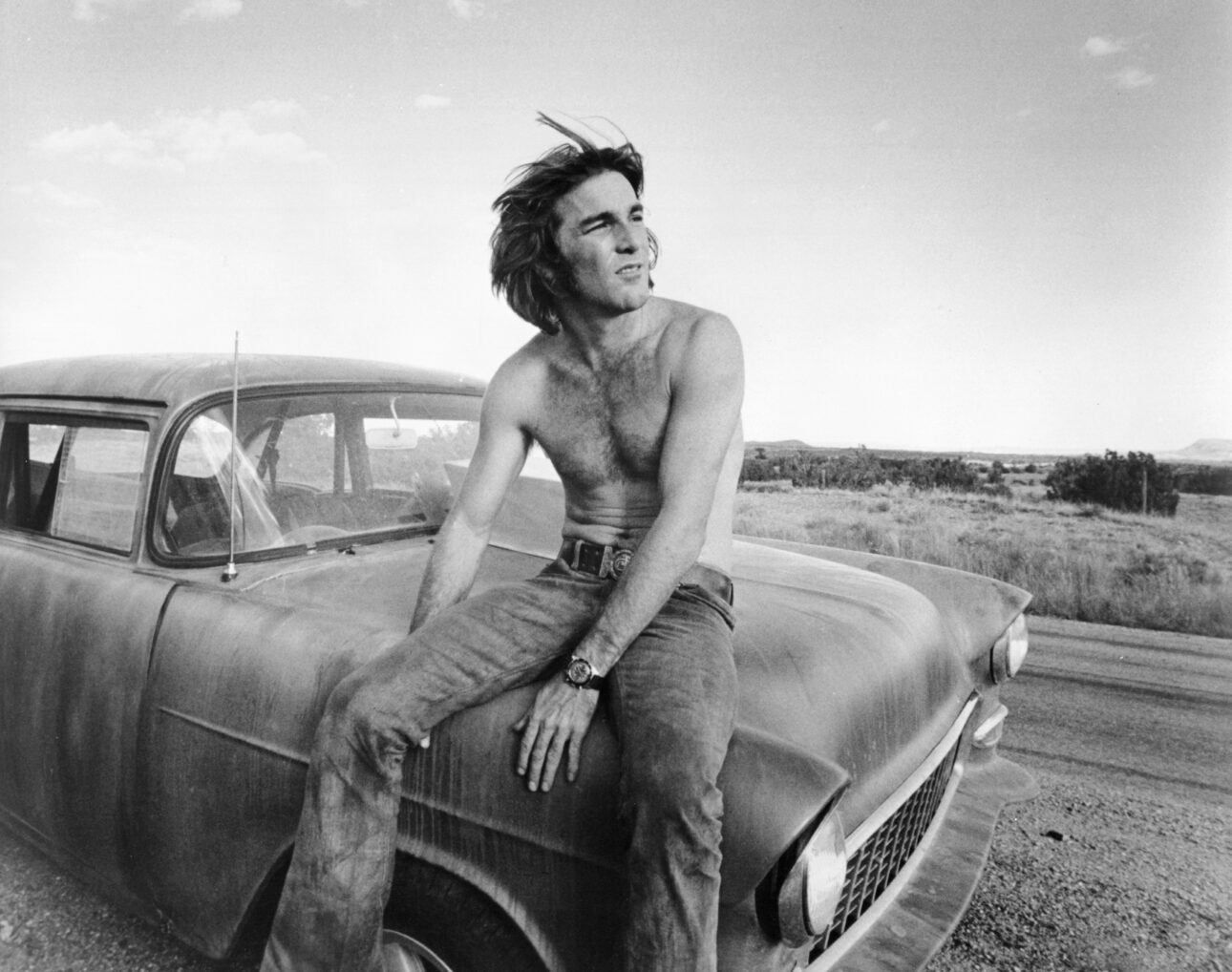
Also landing in LA in late 1967 on a mission to reinvent himself is fellow lifelong criminal and racist jailbird, James Earl Ray. The speed-freak who next year will stalk King to Memphis, here gets a nose job while trying to learn hypnotism and become a pornographer. Ray expresses his support for the presidential campaign of Alabama’s pro-segregation Governor, George Wallace, and inquires with the ultra-right John Birch Society about moving to Rhodesia, then an internationally unrecognized state under white minority rule. Ray also studies Scientology in LA, he later tells biographer William Bradford Huie.
Already well-versed in Scientology [as he understands it], living out a porno-dream (although gonorrhea was a constant), and not being too bad at hypnosis, Manson is a few steps ahead of Ray, including with white supremacy. For far from being an isolated, angry white misfit, Manson gets busy building his own white guerrilla army here in California. Inspired in part by the North African exploits of Wehrmacht General Erwin Rommel, Manson has his followers steal scores of cars which they strip and refashion on their ranch, forming a dune buggy battalion which they can use for lighting raids on outlying towns. Manson also says that the buggies will be ideal after the blacks win America’s coming race war. Having slaughtered the hapless whites, Manson says, the blacks will soon realize that they are unfit for governance and hand power to Manson, newly emerged from the desert with his elite force.
Ray certainly gives race-war a good prod along when he assassinates King in April 1968, the resulting wave of uprising hitting 110 cities and this time needing not just hordes of National Guardsmen but thousands of regular Army troops. As Chicago slides out of control, Mayor Richard Daley asks Johnson to send in the Army, telling the president that “we’re in trouble … it’s starting to break down in different places.”
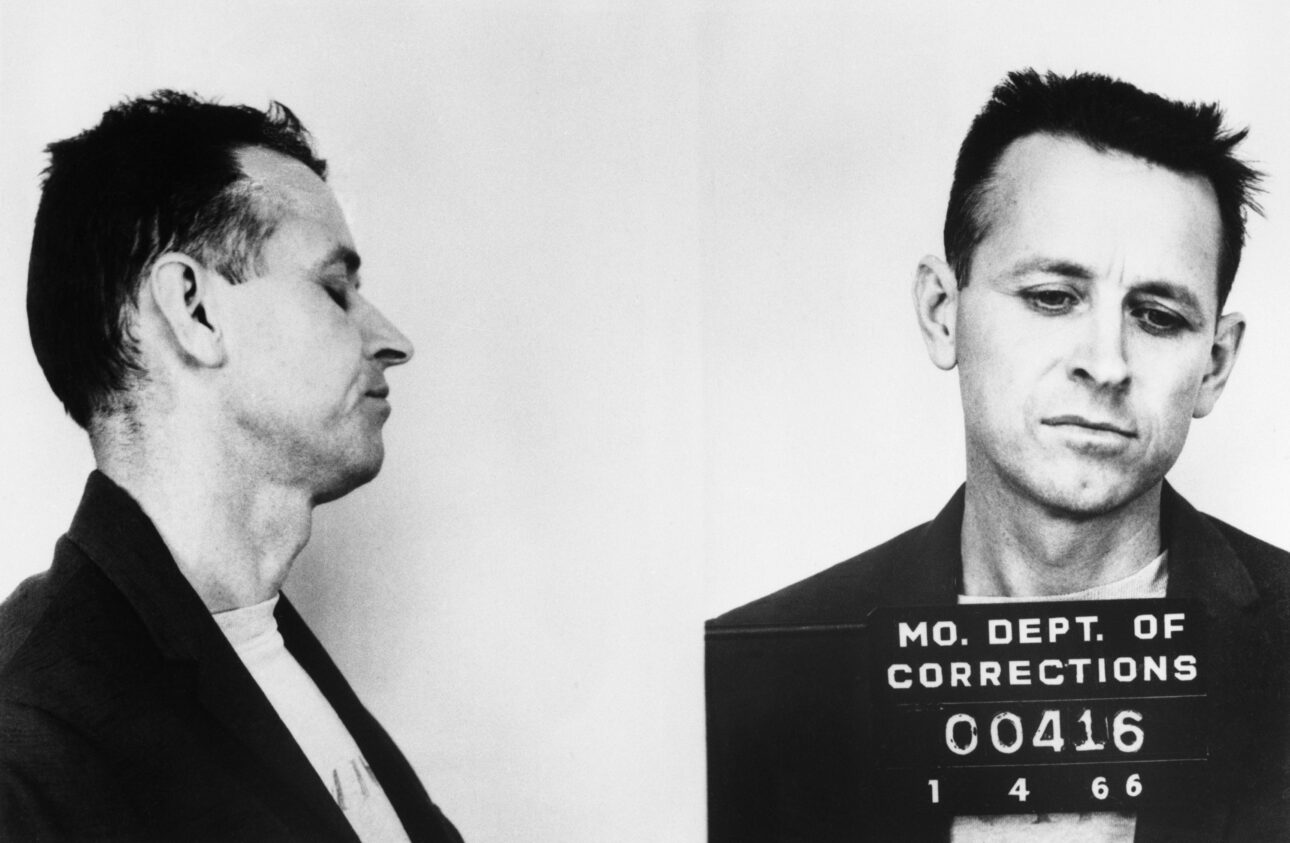
Or, in the words to come from The Beatles: “Look out, helter skelter/She’s coming down fast.” Many such communiques about the impending race war are in the Beatles’ new record, Manson says in November 1968 when the avant-garde double album popularly known as the White Album (but actually simply called The Beatles) is released. Manson says it is a personal message to him.
To prepare his acid commandos, Manson sends small groups on ‘creepy crawlies’, night-time, black-clad missions in which his most faithful break into and explore wealthy houses without waking the inhabitants, whom he called Piggies, in line with a White Album song of the same name which ridicules the rich before stating that “In their eyes there’s something lacking/What they need’s a damn good whacking.” When soft-footed, light-touch creepy crawlies become comfortable enough, Manson sets the raiding parties stealing and starts to talk about binding, kidnapping or killing Piggies. The regular sessions of Manson-worship, in which he doles out acid and then sits above his followers to spout mysticisms, becomes more focused on playing with the illusion of death.
The burglaries aren’t lucrative enough for what is now a big family complete with newborns and toddlers and neither is straightforward drug dealing, so they try to rip off a black dealer who runs by the name of Lotsapoppa. He does not submit to the family members, telling them—falsely—that he is a Black Panther and if the agreed-upon deal is not honored then a pack of Panthers will descend on the family’s ranch and wipe them out.
Manson calls on Lotsapoppa, shooting him in front of a couple of the man’s associates, and then bolts for the ranch, where he orders a major stepping up of patrols, watches, and counter-surveillance measures ahead of a Panther onslaught. Manson’s racial war-gaming expands bigtime and after one of his crew, Bobby Beausoleil, butchers a white guy in an idiotic attempt at stand-over work, Manson tells him to make it look like the Panthers did it. Beausoleil, a musician and collaborator with underground filmmaker Kenneth Anger, daubs a Panther symbol and the phrase “POLITICAL PIGGIE” on the wall in the victim’s blood.
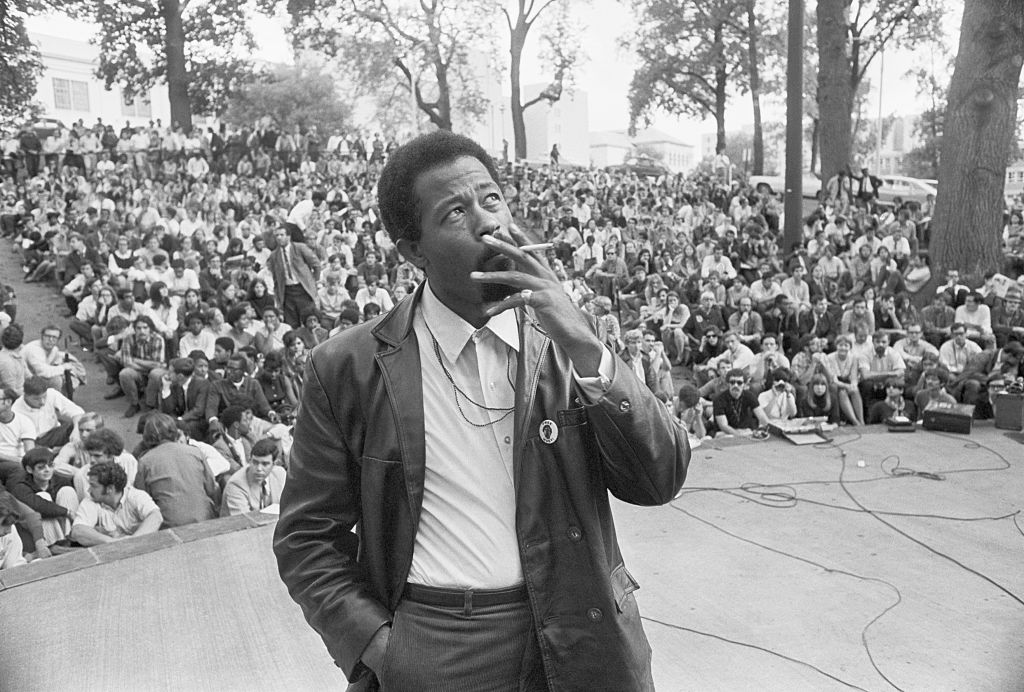
Manson hopes this will cause a crackdown on the Panthers, followed by a counterstrike by the militants, leading to the “white retaliation” that King feared, and so on until Charlie and the Beatles are proven right. Beausoleil, however, is soon picked up by police having broken down in the victim’s car and left prints at the scene. So no Helter Skelter just yet.
The creepy crawlies of Friday and Saturday nights, August 8 and 9, 1969, are intended to get it right this time, in the process freeing Beausoleil by showing the cops it was the Panthers on a rampage and kick-starting the race war.
At the core of Manson’s death squads are two acolytes, Charles ‘Tex’ Watson and Susan ‘Sadie’ Atkins, both of whom drive the slaughter more aggressively than the other, haphazard squad members. Unlike the other trippers and stoners, however, Watson and Atkins take methamphetamine-hydrochloride (brand-name Methedrine) in preparation for the attack.
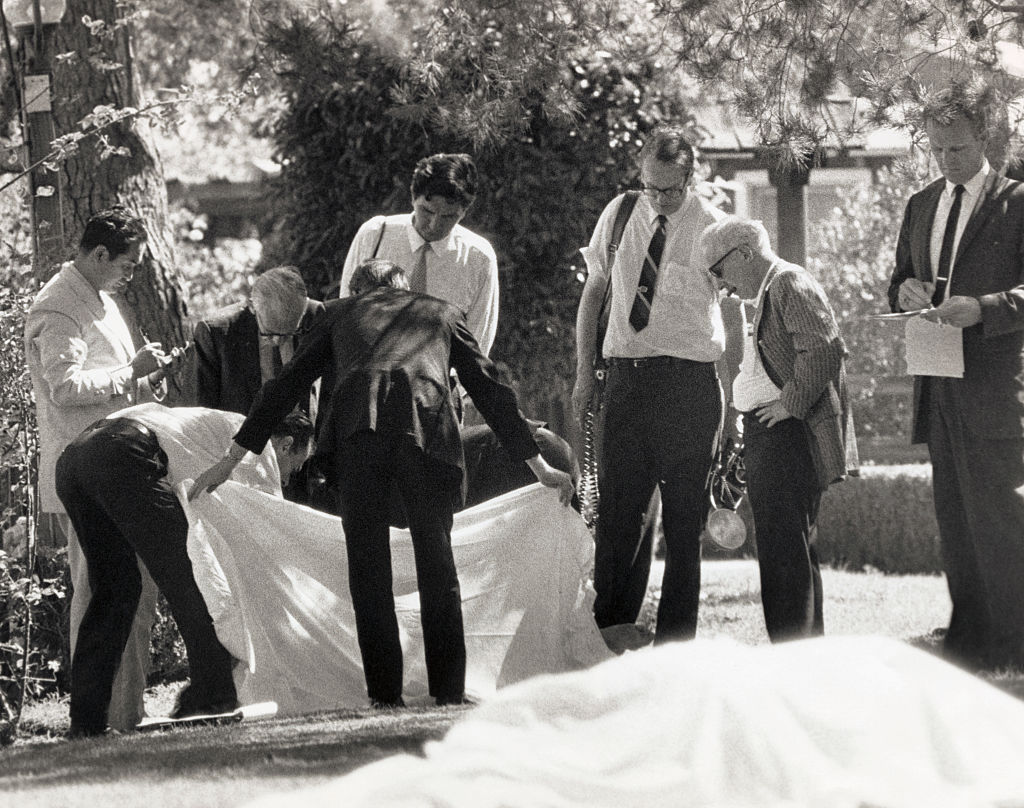
Manson’s droogs call upon Tate and four others visiting her house on Friday night; the following night they drop in on Rosemary and Leno LaBianca at their Los Feliz (the happy) home. Nobody so visited survives.
After sitting out the first night, Manson himself enters the LaBianca house first, bailing up the couple at gunpoint and then binding them for slaughter. After the couple are stabbed to death, “WAR” is carved into Leno’s stomach, while “DEATH TO PIGS” and “RISE” are written on the walls in blood. “HEALTER (sic) SKELTER” is smeared on the refrigerator.
As before, the Black Panthers are not blamed, although it takes until December for the police to arrest Manson and his blood-stained family of sick white brothers and sisters.
As before, Polanski stares into the void, grappling with the murder of a pregnant woman in and of his life by people he does not even know. And again, although not until Manson later takes a razor and ink to his face, there will be a Swastika hanging over the act. Poland. America. Wherever. Whyever.
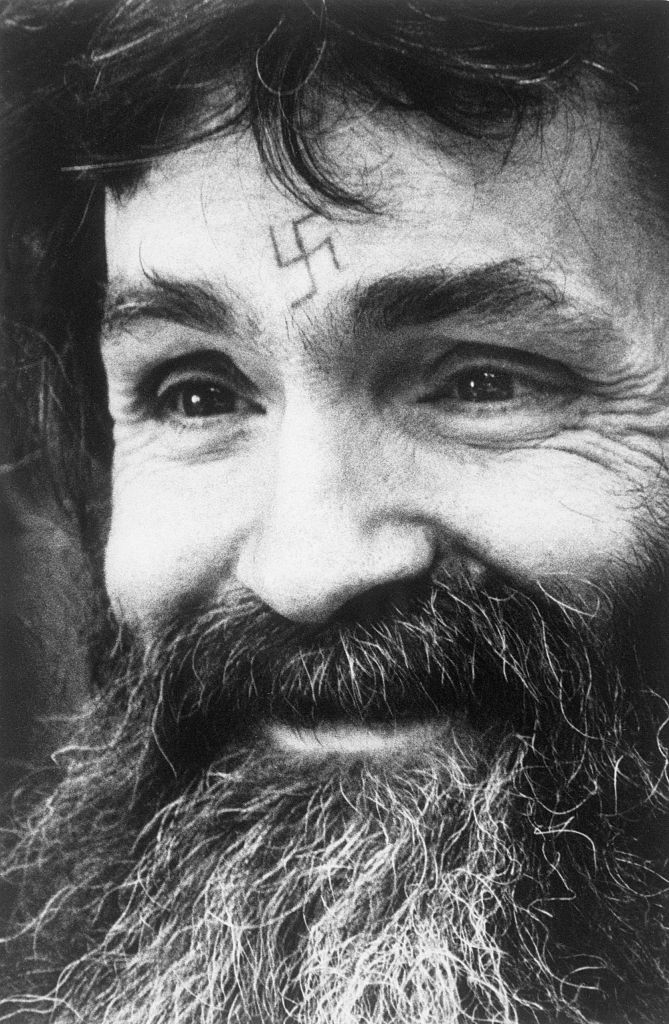
Manson was cremated following a fight over his corpse that broke out soon after his death from natural causes in 2017 at the age of 83. His pulverized bones were scattered on a California hill.
Meanwhile, in a world beyond time, a sedated Polanski kneels before his wife’s blood. PIG is written on this door amidst mountains named after Saint Monica, a North African woman of the Fourth Century. Monica was venerated by the Catholic Church after curing her son, Augustine of Hippo, of heresy.
Augustine’s great wrong was to spend years beholden to Manichaeism, a doctrine that insists good is not more powerful than evil and that the material world is not a sublime manifestation of God’s creative glory. In fact, as sung in a Manichaean hymn, much that we may find beautiful is the camouflaged effluent of the Demon of Wrath, for:
Filth and dross flow from him to the earth. They clothe themselves in
manifold forms and are reborn in many fruits.
Hymn on the Third Messenger and the Archons
According to this faith, the holding of which was punished by death for martyrs uncounted, physical creation is a desperate containment exercise, fighting to encase Darkness that seeks at every instant to burst forth and overwhelm the realm of Light.
But don’t despair, my scarred and scarring lovelies. Within not so many more orbits, a blood-red dawn will come and then stay: holding the sky fast. At this time, says the heresy:
This whole World stands firm for a Season, since there is a
great Building being erected outside of the World,
At the Hour when its Architect shall complete it,
the entire World shall be dissolved.
It shall be set afire, that fire may melt it away.
The End of the deficiency
“Here it comes, here it comes, in all its burning.”
Further links
Being a black cop in 1960s Los Angeles, as described by Norman Edelen
Martin Luther King Jr speaking in LA after the Watts Rebellion/Riots of 1965
Novelist Thomas Pynchon writing in 1966 about Watts and race relations
A 1967 recording of Reverend Albert Cleage giving a sermon amidst rioting

